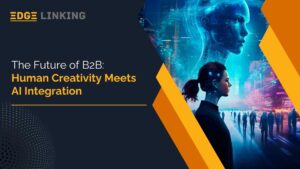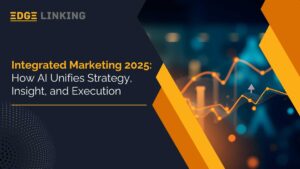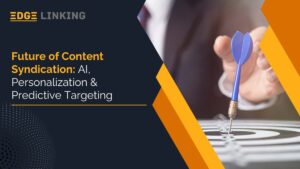Advertising has always been a leader in change, evolving with cultural trends and new technologies. Today, the global ad industry, worth more than $700 billion, is experiencing a huge shift thanks to Artificial Intelligence (AI). AI isn’t just a trendy term; it’s a strong resource that helps brands connect with their audience more efficiently, tailor their campaigns, and make the best use of their resources like never before. However, even with all these possibilities, the path forward hasn’t been straightforward.
The Pitfalls of Overpromising Early-Stage AI
At the beginning of using AI in advertising, there was a lot of excitement that sometimes went too far. Businesses claimed that AI could solve every marketing problem, whether it was guessing what consumers would want or creating the ultimate campaign. But in those early days, AI didn’t have the advanced capabilities to meet those big expectations.
Common Challenges:
- Data Quality Issues: AI systems require clean, high-quality data. Early adopters often grappled with incomplete or biased datasets, leading to inaccurate outputs.
- Over-Reliance on Automation: Over-reliance on automated systems without human oversight led to errors, such as irrelevant ad placements or misinterpreted consumer intent.
- Limited Contextual Understanding: Early AI struggled to grasp nuances like cultural sensitivities or evolving trends, resulting in tone-deaf advertisements.
These shortcomings highlighted the need for more advanced AI systems and a balanced approach that incorporates human creativity and oversight.
The Need for Advanced AI in Advertising
Modern advertising demands speed, precision, and adaptability—qualities that advanced AI systems excel at. Unlike their predecessors, contemporary AI tools leverage vast amounts of data, deep learning algorithms, and natural language processing (NLP) to deliver results that align with business objectives.
Important Advantages of Advanced AI:
Personalized Ads: AI looks at how people behave to make ads that fit their interests, leading to better engagement.
Future Predictions: By spotting trends in past data, AI can guess what people might do next, allowing for quick changes in marketing strategies.
On-the-Spot Changes: Advanced AI keeps an eye on how campaigns are doing and tweaks them immediately to get the best return on investment.
Better Audience Targeting: AI finds specific groups and smaller segments, making sure ads go to the right audience when it matters the most.
Real-World Applications:
- Dynamic Creative Optimization (DCO): AI generates multiple ad variations and determines which performs best for different audience segments.
- Voice Search Integration: AI-powered ads now cater to voice search queries, aligning with the growing popularity of smart speakers.
- Augmented Reality (AR) Ads: AI enhances AR experiences, allowing users to interact with products virtually, bridging the gap between digital and physical.
Bridging the Gap Between AI and Human Creativity
While AI excels in data-driven decision-making, it cannot replicate human creativity and emotional intelligence. Effective advertising requires a harmonious blend of AI’s capabilities and human insight to craft compelling narratives that resonate with audiences.
How to Achieve the Balance:
- Collaborative Campaign Design: Use AI to gather insights and identify trends, but rely on human creativity to craft the story and visual elements.
- AI-Assisted Brainstorming: Tools like GPT-based platforms can generate ideas or suggest variations, serving as a creative partner rather than a replacement.
- Human Oversight: Ensure that AI-generated content aligns with brand values and avoids potential pitfalls, such as cultural insensitivity.
- Continuous Learning: Train both AI systems and creative teams to work together, leveraging each other’s strengths.
Case Study:
During the pandemic, a top clothing brand turned to AI to understand how consumers were feeling. While the technology spotted a trend towards comfy clothing, it was the human creatives who crafted heartfelt campaigns focusing on “home comfort,” leading to a 35% boost in engagement.
The Growing Impact of AI in Advertising
AI is changing the game for brands, not just in traditional advertising but also in how they connect with customers across various platforms, creating a more unified and engaging marketing approach.
Social Media Advertising:
In social media, AI plays a key role by looking at how users act to show them content that matters to them. Platforms like Facebook and Instagram leverage AI to guess what users might like, making sure ads reach the right people when they’re most receptive. Plus, AI chatbots are becoming a common feature on these platforms, allowing brands to chat with potential customers instantly.
Programmatic Advertising:
Programmatic advertising has become vital for online marketing, and AI is taking it further. By automating ad purchases and placements, AI makes sure targeting is spot-on and costs are kept in check. It also allows advertisers to adjust their campaigns in real-time based on how well they’re doing, which helps maximize returns and cuts down on unnecessary spending.
Content Creation and Personalization:
With tools that use AI, like image recognition and natural language generation, creating content has never been easier. Brands can now design ads that alter their images or text based on what users prefer. This kind of tailored approach leads to better engagement and helps build a stronger bond with the audience.
Looking Ahead: AI Goes Beyond Just Automation
As AI technology progresses, its role in advertising is set to grow, shifting from simple automation to becoming a vital partner in innovation. New technologies like generative AI are already helping craft unique ads that we couldn’t previously imagine. Soon, AI may even be able to conduct virtual focus groups, giving rapid feedback on campaign ideas before they launch.
Additionally, combining AI with newer technologies like virtual reality (VR) and augmented reality (AR) could lead to exciting advertising experiences. Picture AI-powered VR ads where users can engage with products in a virtual space, offering a level of interaction like never before.
The Blend of AI and Human Creativity: The Heart of Authenticity
Even as AI-generated content keeps evolving, one thing is crucial: authenticity. AI is great at optimizing but still struggles with the nuances of genuine storytelling. As consumers become more selective, they seek brands that show their values and communicate honestly. Human creatives are essential to keep AI-driven campaigns sincere and in tune with the brand’s identity.
For example, while AI can point out the best-performing ad text or images based on past data, the emotional tone and cultural sensitivity often need a human touch. Here’s where the collaboration shines. AI can spot trends and patterns, while human creatives can weave together compelling stories that create emotional bonds and foster brand loyalty.
The Need for Ethical AI in Advertising
As AI becomes more integrated into advertising, ethics must be a priority. It’s vital that AI algorithms are clear, fair, and respect consumer privacy. Brands should be cautious about how they utilize AI, especially regarding vulnerable groups or decisions based on incomplete or biased information.
To keep consumer trust, businesses need to be open about their AI use and how they handle consumer data. Finding the right balance between personalization and privacy is crucial for maintaining trust and preventing any negative reactions.
Wrapping Up
AI is undeniably reshaping the advertising world, bringing exciting chances for precision, personalization, and efficiency. Yet, its greatest promise lies in working alongside human creativity. By recognizing its limitations and harnessing its strengths, businesses can craft advertising campaigns that not only achieve results but also create meaningful connections with their audience. As AI continues to grow, the future of advertising will likely be an exciting blend of technology and human creativity, pushing the limits of what’s achievable in marketing. The combination of AI and human talent will shape the next phase of advertising, leading to campaigns that are not just effective but also deeply resonate with people.





